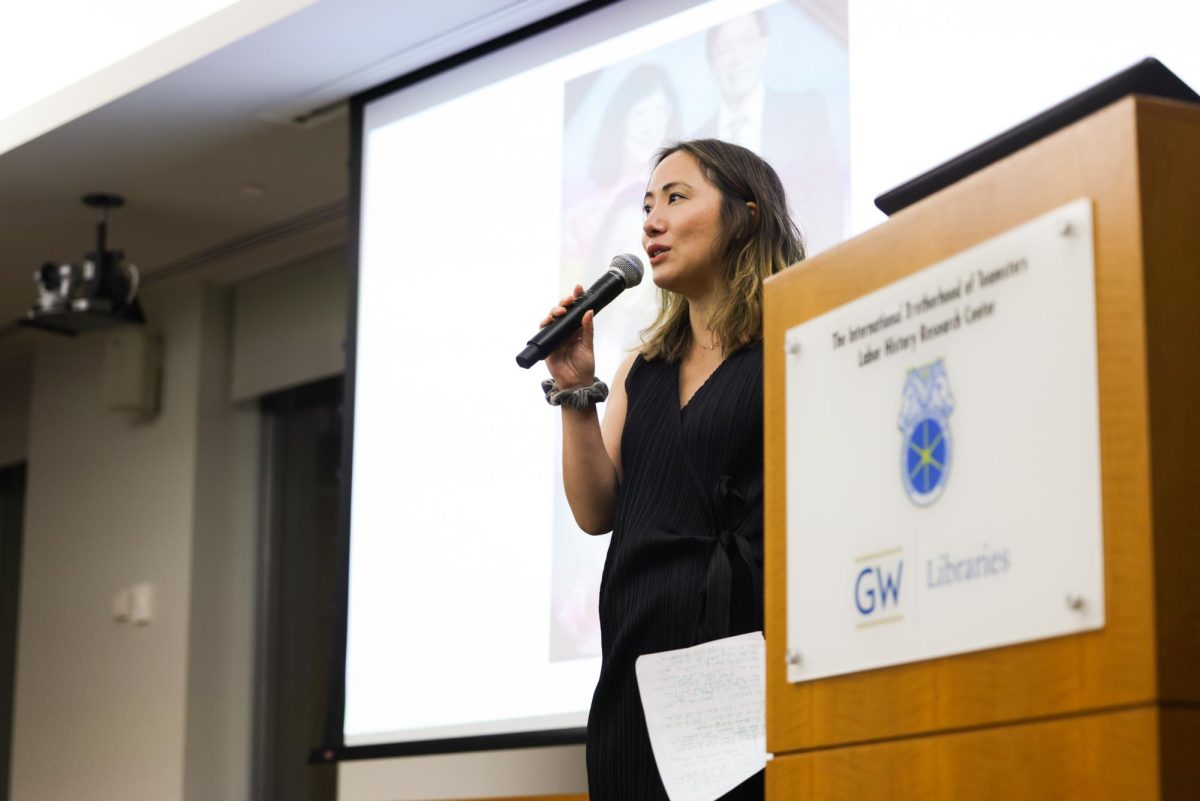Senior Karissa Broderick-Beck spent her first Freshman Day of Service pulling weeds at the Anacostia Watershed Society four years ago.
Since then, she has stayed involved, leading Freshman Day of Service groups to elementary schools across the District for the last three years.
“I never did service in high school. It was something I was never really interested in,” Broderick-Beck said. “But after [Freshman Day of Service], I knew that doing service made me a lot happier, and I felt like I was doing something for the greater good.”
She has seen the number of students participating rise from 1,200 volunteers the first year to more than 2,000 students this year, after the University scrapped its volunteer sign-ups and encouraged all freshmen to opt in.
When Broderick-Beck participated her freshman year, the Watershed Society was one of 12 service sites across the District. This year, students volunteered at 35 locations across the city, including several elementary schools, the National Arboretum and the Lincoln Memorial.

Senior Tyler Calder, a fourth-year participant, said the event introduced her to the service spirit of the University, which she said spurs incoming freshmen to get engaged in the community.
“Freshman Day of Service is a wonderful way of setting a precedent for the freshmen coming in, and to let them know that GW is a community that rallies around the idea of serving others,” Calder said.
Caroline Ayes, who also participated in the event as a senior, said the service projects meant a lot to the community. When volunteering at a school, Ayes said she was inspired by the reactions to her work.
“The principal at the end of the day was so affected by the humility of the GW students that she started to tear up and thank us for our service,” she said.
After four years of fine-tuning the all-day service experience, coordinators received praise from students who have watched the program evolve since 2009. The only way to participate as an upperclassman is through leadership.
“I think the biggest change is that now, when you go into a site, the principal of the school or leader of the organization is there, and they explain to you exactly what you’re doing and why they need your help,” senior and team leader Mark Buente, whose service involvement was also spurred by the event’s inception four years ago, said.
This year, coordinators ditched official sign-ups for freshmen, expecting participation from the majority of the Class of 2016.
While she said the service trips had become more organized, Broderick-Beck said the level of interest among all freshmen was lower than in past years.
“Students were just expected to go. I could tell that not everyone was 100 percent into the service we were doing,” she said.
Robert Chernak, the former senior vice provost and senior vice president for Student and Academic Support Services, told The Hatchet last year that Freshman Day of Service cost about $80,000, attributing most of the costs to transportation. He said the University cut about $20,000 by switching to school buses from coach buses.





